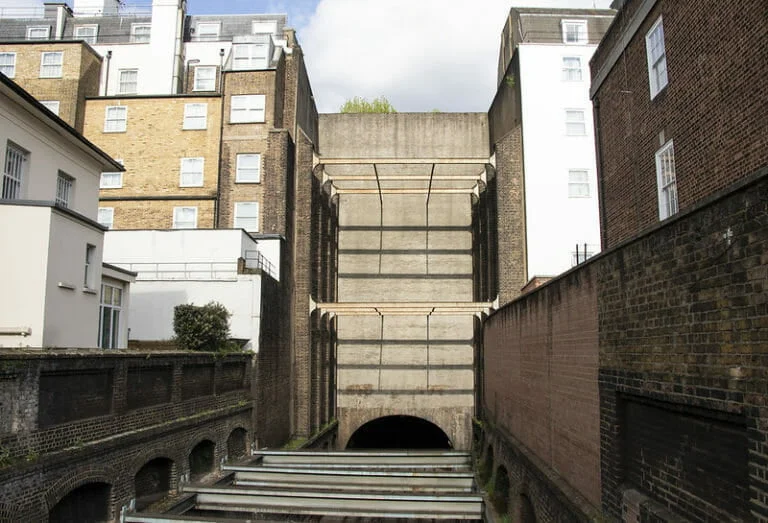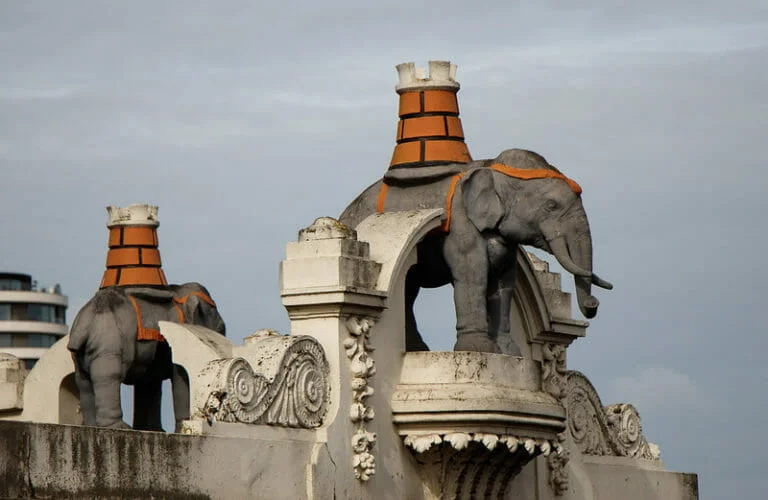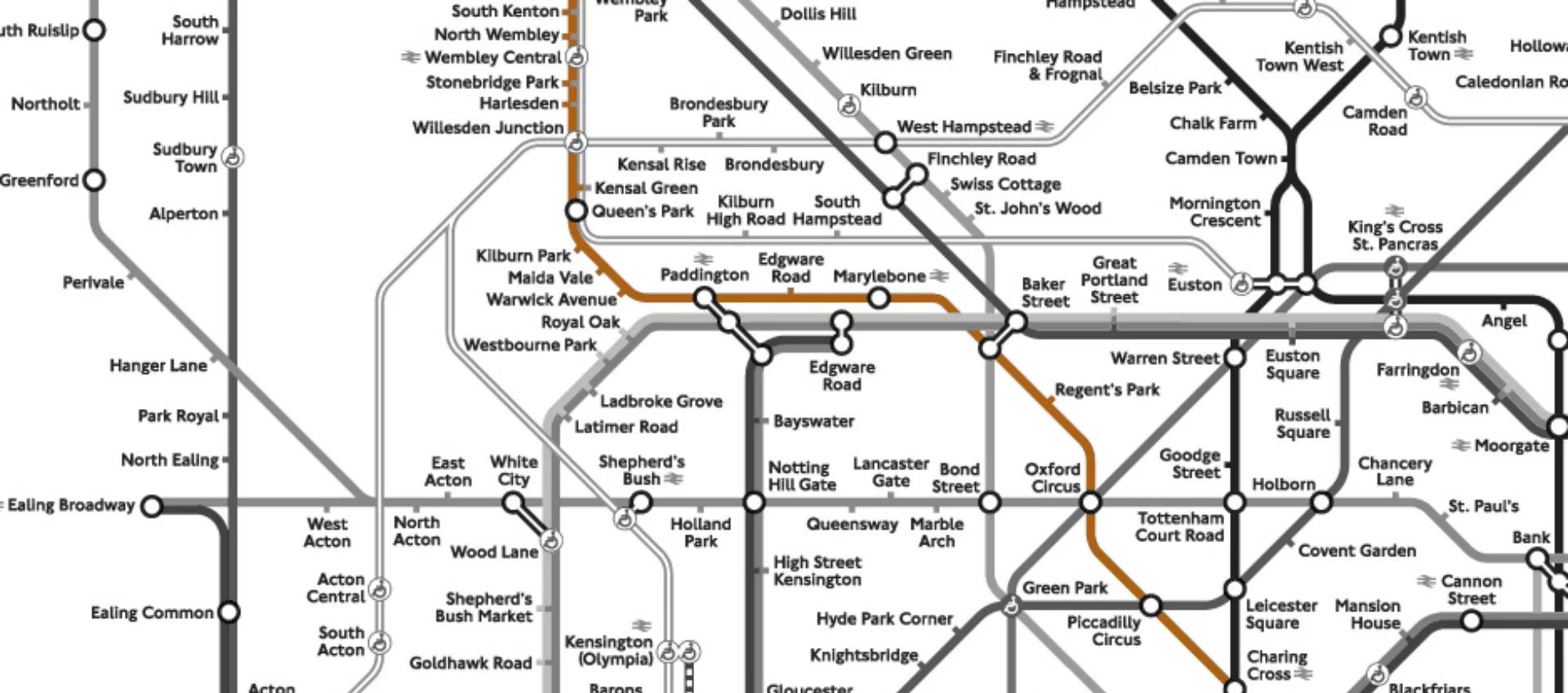You’re probably here because of our list, An Interesting Fact About Every London Tube Station.
Now, like the Underground itself, the list is pretty huge. And also like the Underground, we thought we’d make it easier to navigate – so we also created a little splinter list dedicated to stations on The Bakerloo Line. A list which, lo and behold, you’ll find on this very page…
Harrow & Wealdstone
Technically the oldest station on the network: the mainline station was built in 1837, predating Baker Street by 24 years. It was opened for Underground trains in 1917.
Kenton
Both Kenton and Kennington are, by total coincidence, derived from the same name – Keninton.
South Kenton
Its platform was built too high for the trains, and never corrected.
North Wembley
The safest tube station on the entire network, according to the MET.
Wembley Central
Despite servicing Wembley Stadium, is only the 142nd busiest station on the line.
Stonebridge Park
The booking hall is the only original feature – the rest has been destroyed by WW2 bombing, and two major fires.
Harlesden
Is almost twice as far away from Harlesden town centre as Willesden Junction is.
Willesden Junction
In 1896 staff totalled 271, including 79 porters, 58 signalmen (in 14 signal boxes) and 58 shunters and yard foremen.
Kensal Green
In December 2006, the station was hit (or grazed) by a tornado.
Queen’s Park
The site of the only “carriage shed” on the tube line: a wooden garden shed-like tunnel used to house stationary trains that you pass through on the northward part of your journey.
Kilburn Park
The first station to be designed around escalators, rather than lifts.
Maida Vale
When Maida Vale station opened on 6 June 1915 it was entirely staffed by women due to shortages of male staff in the war. Turned out to be a good idea.
Warwick Avenue
A song named after it by singer Duffy reached number 3 in the charts.
Paddington

Jeremy Segrott / Flickr
The track running towards Bayswater passes under 23-24 Leinster Road – a facade constructed to match neighbouring terrace houses. disguising where the original house was demolished to allow a gap in the tube system for steam trains to er…let off steam.
Edgware Road
Has a “living wall” wall of plants outside the station, the only one in the underground network.
Marylebone
Very nearly wasn’t built because it might have disturbed the cricket played at Lords. It took an act of parliament to finally push construction through.
Baker Street
Has the most platforms of any tube station – 10.
Regent’s Park
A parliamentary law originally declared that no station could be built at the current site – it was overturned, but there’s still no surface station here.
Oxford Circus
In 1969, to celebrate the opening of the new Victoria Line, The Queen ‘took the wheel’ of a train, and drove it from Green Park to Oxford Circus.
Piccadilly Circus
A world map in the station ticket hall, dating from the 1920s, contains a linear clock that shows the time in all parts of the world.
Charing Cross
Modern day Charing Cross is an amalgamation of two old stations: Trafalgar Square and Strand.
Embankment
Has a huge, empty substation attached to it, abandoned since 1957. Called ‘Pages Walk’ it’s behind a blast door in the station, and is so large it’s been proposed as a possible nightclub location.
Waterloo
Has 23 escalators, the most of any station on the network – more than twice as many as there are in The Shard.
Lambeth North
Has been called Kennington Road, Westminster Bridge Road, and finally Lambeth North.
Elephant & Castle

Tim White / Flickr
Named after a nearby pub, which itself was name-dropped in Shakespeare’s Twelfth Night
Enjoyed this Bakerloo Line trivia? Check out the other lines right HERE.
